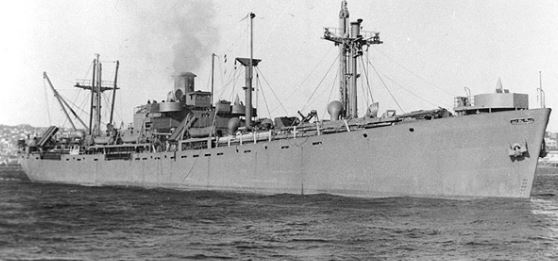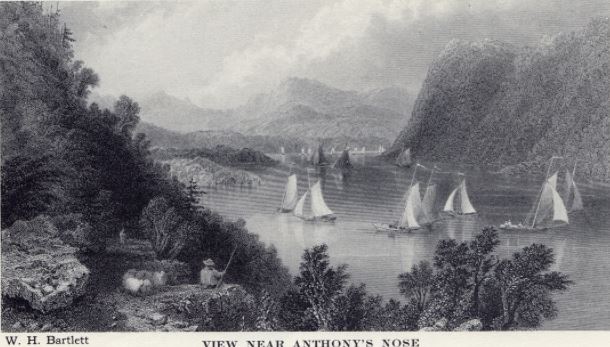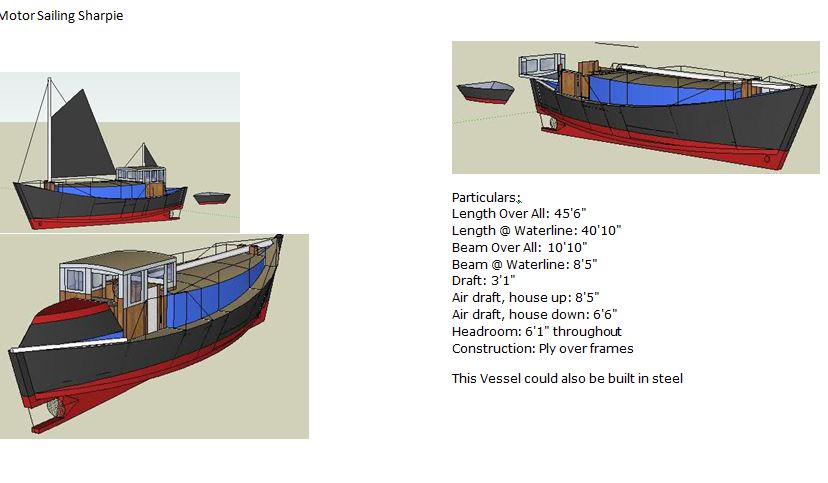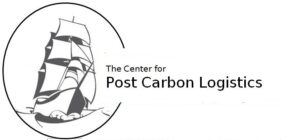Locally built, from locally sourced and recycled materials, crewed with locally trained mariners, home ported along the Hudson, the Harbor, and the canals, carrying locally grown, locally processed, and locally manufactured goods – with liberty from fossil fuels, these future proof ships will be a positive disruption to the status quo.
Future Proof Liberty Ships — Brutally Simple

Liberty ships were a class of cargo ships built in the United States during World War II The design was adopted by the United States for its simple, low-cost construction. Mass-produced on an unprecedented scale, the Liberty ship came to symbolize U.S. wartime industrial output. The immensity of the effort, the number of ships built, the role of women and minority shipwrights in their construction, and the survival of some far longer than their original five-year design life are a testament to what is possible to do when confronted with an emergency. At the peak of production yards were turning out 2-3 ships a day with a 40-day build time.
To meet the emergent climate crisis, and to confront the immense carbon pollution of the existing fossil fueled international and domestic fleet, “future proof” Liberty from Fossil Fuel Ships will be built in US yards to enable us to continue the movement of goods and people from place to place in a carbon constrained future.
These ships will be brutally simple, but elegant, built by aa new generation of shipwrights to kick start the revival of US flagged ships in international and domestic trade. Using proven construction techniques and tried and true (as well as innovative) sail propulsion/electric propulsion technology these “flagships of the future” will be the first steps in adapting to and mitigating the climate crisis, that in significant part is caused by international and domestic shipping.
Why These Ships and Why Now?

The international shipping industry is one of the largest greenhouse gas emitters. If the maritime sector were a country, it would be one of the top six carbon polluters. The shipping industry has been reluctant to take unilateral leadership on emissions. The International Maritime Organization (IMO) is puttering around the edges. It recently declined to make a greenhouse gas reduction plan or commitment.
The Center for Post Carbon Logistics (C4PCL), along with a local, regional, and international coalition posit an alternative. That alternative is disruptive competition from an emerging suite of technologies – hydrogen, solar, and wind/sail powered shipping on New York waterways. Water-borne shipping, even now, is dramatically more energy-efficient than its land-based counterpart. New York, with its network of waterways connecting the Great Lakes to the Hudson, to New York Harbor, and the ocean, has a leadership opportunity in growing this industry.
In New York, achieving the State Climate Act’s goals will require addressing the enormous footprint of transporting goods and people from place to place using fossil fuels. Building Future Proof Liberty ships in New York Hudson River shipyards is the first step toward a regenerative shipping industry on New York’s canals, the Hudson River, The Harbor, the East Coast, Caribbean, and transatlantic routes.
The Hudson River, a Water Highway
Not so long ago the Hudson River was a bustling highway linking even the smallest communities to a web of regularly scheduled commercial routes. Schooners, sloops, barges, and (much later) steamboats provided a unique way of life for early river town inhabitants. Farmers, merchants, and oystermen relied on this vibrant and diverse fleet of vessels to bring in supplies and deliver their goods to market. This arm-of-the-sea was an integral part of the lives of those who worked New York’s inland waters.

The Hudson River sloop was the main means of transportation on the Hudson River from the early days of Dutch settlement in the 17th century (1600s) until the advent of the steamboat. Based on a Dutch design, this single-masted sailboat carried passengers and cargoes up and
down the Hudson River between New York and Albany and points in between for over two hundred years From The Hudson River Maritime Museum Blog


The legacy of these sailing cargo vessels continues in the iconic Sloop Clearwater and the organization that supports it. The “Ferry Sloop” Woody Guthrie is another example of both the historic nature of those ships and the skills that it takes to sail, maintain, and rebuild when necessary. A complete rebuild of the Woody Guthrie, and three restorations of Clearwater were performed at the shipyard at the Hudson River Maritime Museum, in the last few years, by Rondout Woodworking in conjunction with the Museum’s Wooden Boat School staff and volunteers
Precursors, Prototypes, and Disruptors
Vermont Sail Freight, the Vessel Ceres,
“Contrary to the techno-paradise that some expect, my belief is that our future will likely resemble our past, and that we may fall back on proven, low energy approaches to supporting human life that have been historically proven to work. “Isn’t that pessimistic?” asked the interviewer. I replied that I don’t think so. It is in my view even more pessimistic to imagine a world continuing on the current path, becoming a place in which there is no place for human labor or creativity, where rather than doing things with our backs and hands and minds, we must instead wait passively for conveniences and solutions to be marketed to us. That, to me, is the most depressing future imaginable.” — Erik Andrus Founder the Vermont Sail Freight Project

While others were writing and talking about reviving sail freight on the Hudson and the Canals, Erik Andrus, a Vermont Rice farmer was building a sailing freight barge. Erik sells baked goods produced on the farm at farmers markets in the Vermont communities adjacent to Lake Champlain and realized that he was delivering the locally produced organic and farm baked goods in a fossil fuel truck. He immediately began to research horse drawn bread trucks and built one.
Taking this idea to the next stage, he envisioned floating his and his neighbors farm goods down the Hudson on rafts until he researched the difficulties of doing so and conceived of the Vermont Sail Freight Project. Beginning in 2012, the Vermont Sail Freight volunteers, led by Erik, designed, and built a 15-ton capacity sailing barge and raised funds for her construction from grants, donations, and pre-sale of cargo items. The Ceres was launched on July 27, 2013 and was ready to journey downriver with cargo in October 2013. This was made possible in part by the participation of Greenhorns, USA and by the support of the Eastman and Waterwheel Foundations. In October 2013, $56,000 worth of products from small farms in the north were delivered and distributed along the Champlain-Hudson waterway at farmers’ markets and through events and wholesale accounts. Although Ceres’ last voyage was in 2014 its legacy and Erik’s vision is the foundation on which moving goods and people in a carbon constrained future will be built.
Eriemax
In 2011 two cities on the Erie / NYS Barge Canal were among U.S communities that lost the most population the previous decade. Naval architect, Geoff Uttmark’s NYSERDA funded Eriemaxship design and HEFTTCo. business plan was developed ” to stimulate growth by creating a green, lower cost trade route using ship-kit, electric powered, owner-operated small freight ships.”
Although the ship itself was not built, the rigorous analysis, of the cost of building, cargo handling, crewing, and port infrastructure requirements, are still viable models for the evaluation of wind and alternative fuel cargo carrying on the Hudson, and Canals.
Uttmark’s Ship Shares initiative is a comprehensive conduit for maritime development, education, networking, and support of not-for-profits inspiring tomorrow’s marine industry leaders.

“Our Vision is to lead impact investing in the marine shipping space. We do this by leading or joining design of seaborne transport initiatives that have strong social and environmental merit in addition to positive traditional financial metrics, and by research, design and identification of potential “game-changer” technologies that can span multiple shipping sectors. Our emphasis in all endeavors is to advance local or regional social benefit projects or disruptive technologies with world-class expertise and world-wide capital to maximize the impact of invested human and financial resources.”
The Schooner Apollonia and the Solar Electric Solaris
The Schooner Apollonia is engaged in commerce under sail on the Hudson River and New York Harbor.

Apollonia is a 64-foot steel-hulled schooner built in Baltimore, MD in 1946. She is designed to move efficiently through the water, powered by a traditional gaff-rig sail plan designed by naval architect J Murray Watts. With a 15’ beam and rugged steel construction, she’s a stout work boat capable of carrying 20,000 lbs. of cargo. Being a schooner, the crew requirements are smaller, and the variety of sails gives us flexibility for different conditions that we will encounter on the river.
On her most recent trip to New York City from Hudson, she carried a mixed load of cargo including bags of grains and malted barley for breweries along the River. When access to a dock was limited, cargo bikes were used for “last mile logistics.” On her return trip she carried a variety of French wines and chocolates cross docked from the ocean sailing freighter Grain de Sail during a meet up in Brooklyn. Securing funds for needed upgrades, and financial stability is a primary goal of the Liberty from Fossil Fuel Ships initiative.
The Hudson River Maritime Museum’s solar electric Coast Guard inspected passenger vessel Solaris has proven its seaworthiness and efficacy over the last three seasons. Solaris is a classic “launch” design adapted to her 21st century solar electric propulsion system. Solaris is a pioneering example of near future ferries, larger passenger vessels, and self-propelled canal barges. Conceived of by David Borton, designed by Dave Gerr, and built by Rondout Woodworking at the Wooden Boat School, she is the working prototype for a class of solar electric commercial vessels.

The Hudson River Maritime Museum recently received a grant to build a dock in Rhinecliff, NY’s Amtrak train station to begin a ferry service to Kingston and The new State Park in North Kingston. Support for Solaris’ maintenance and financial security is also a priority of the Liberty from Fossil Fuel Ships Initiative.
Liberty from Fossil Fuel Ship Prototypes
Five prototypes are proposed to be R&D’d, designed, financed, and built in Hudson Valley, NY shipyards: examples include, but are not limited to, a 180′ “short sea,” coastal, transatlantic, and/or Caribbean electric clipper, a 65′ river and coastal Sharpie Schooner, a “39′-45′ pick up of the sea,” “Eriemax” 80′ River, Canal, and Coastal Sail Freighter, and a solar electric canal barge.


65’Sharpie Schooner



Look for Blog Posts and Articles on R & D, design, financing, and building these prototypes and a March 2022 Sail Freight Conference at the Hudson River Maritime Museum.

Leave a Reply